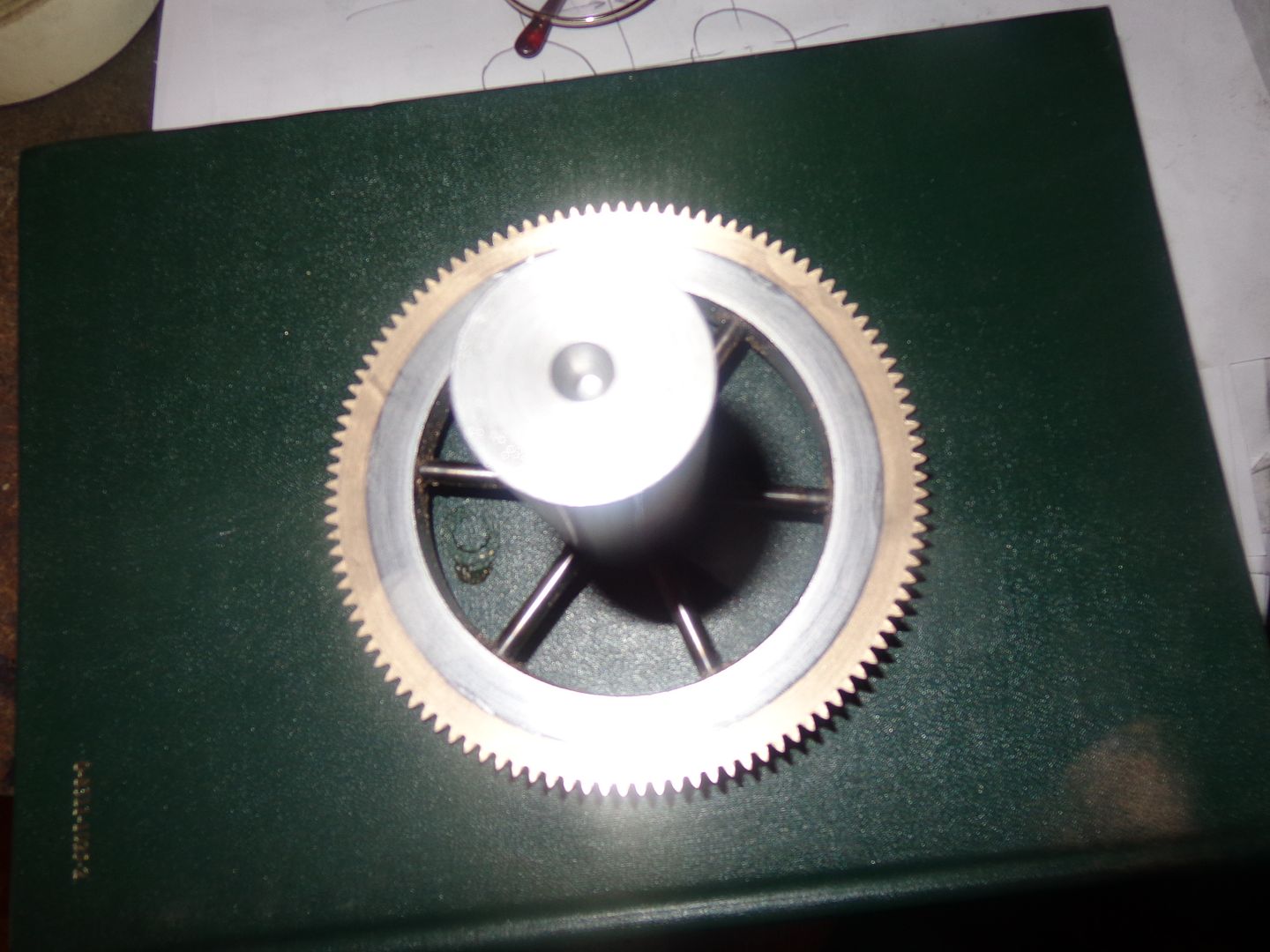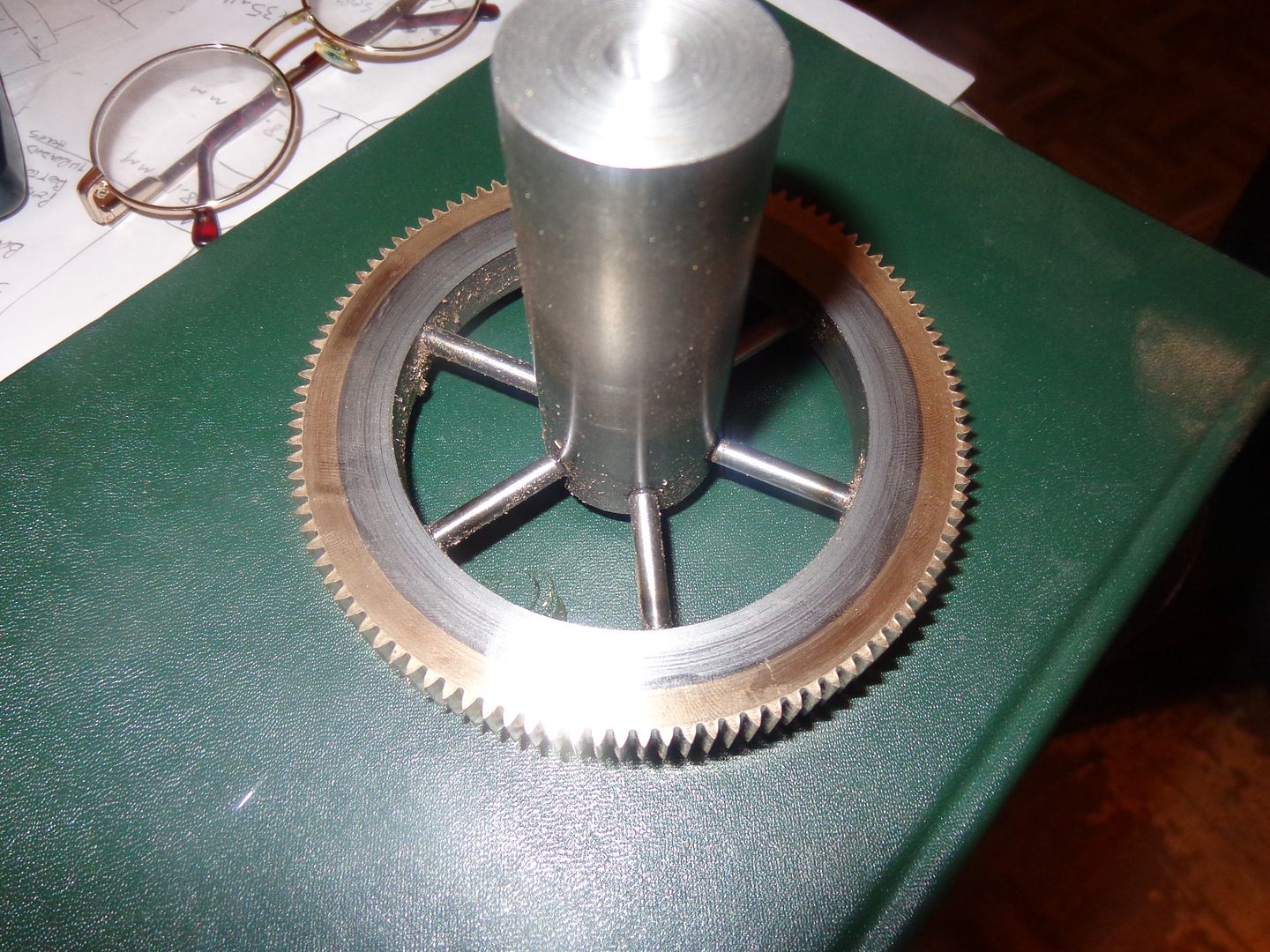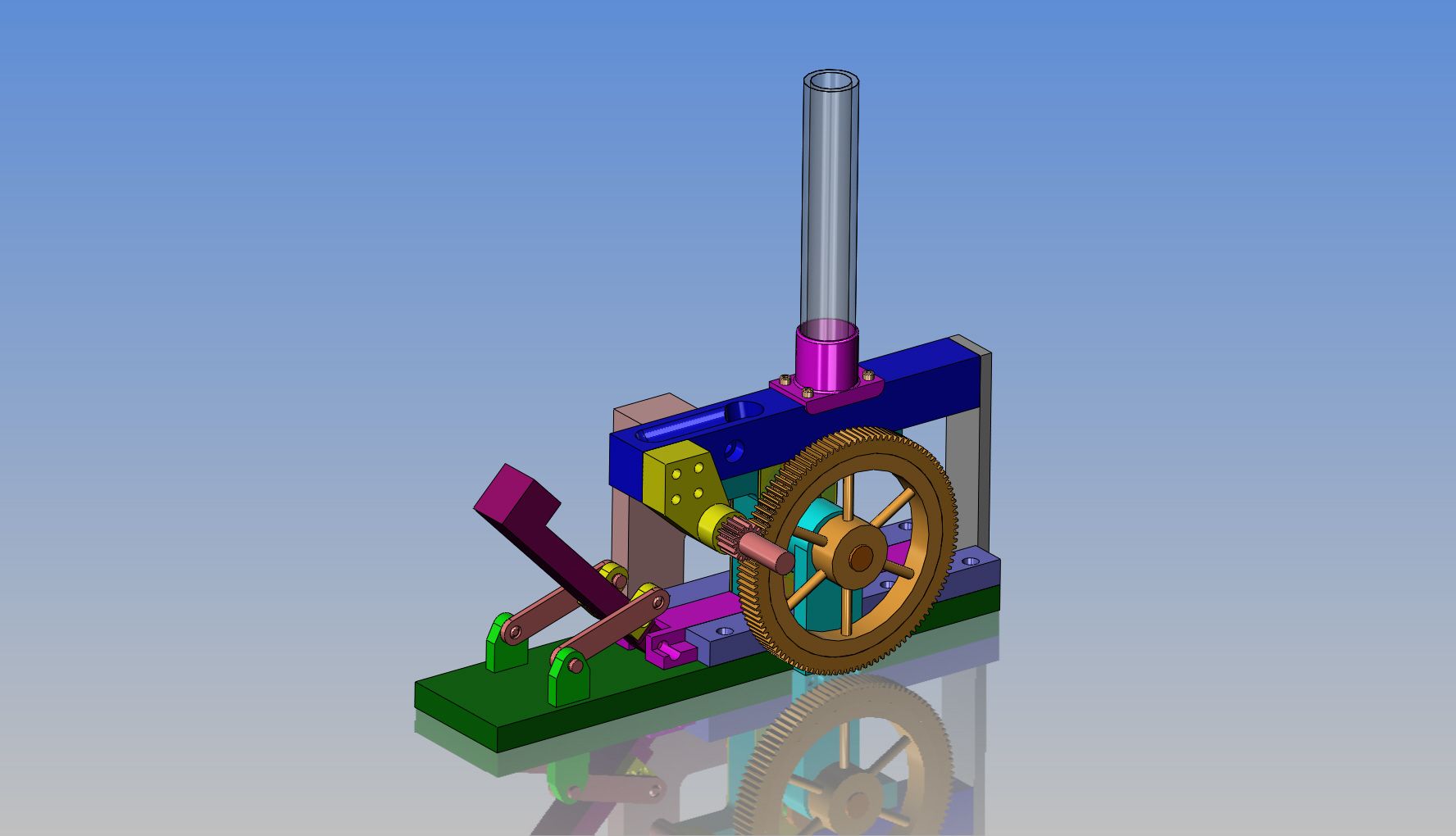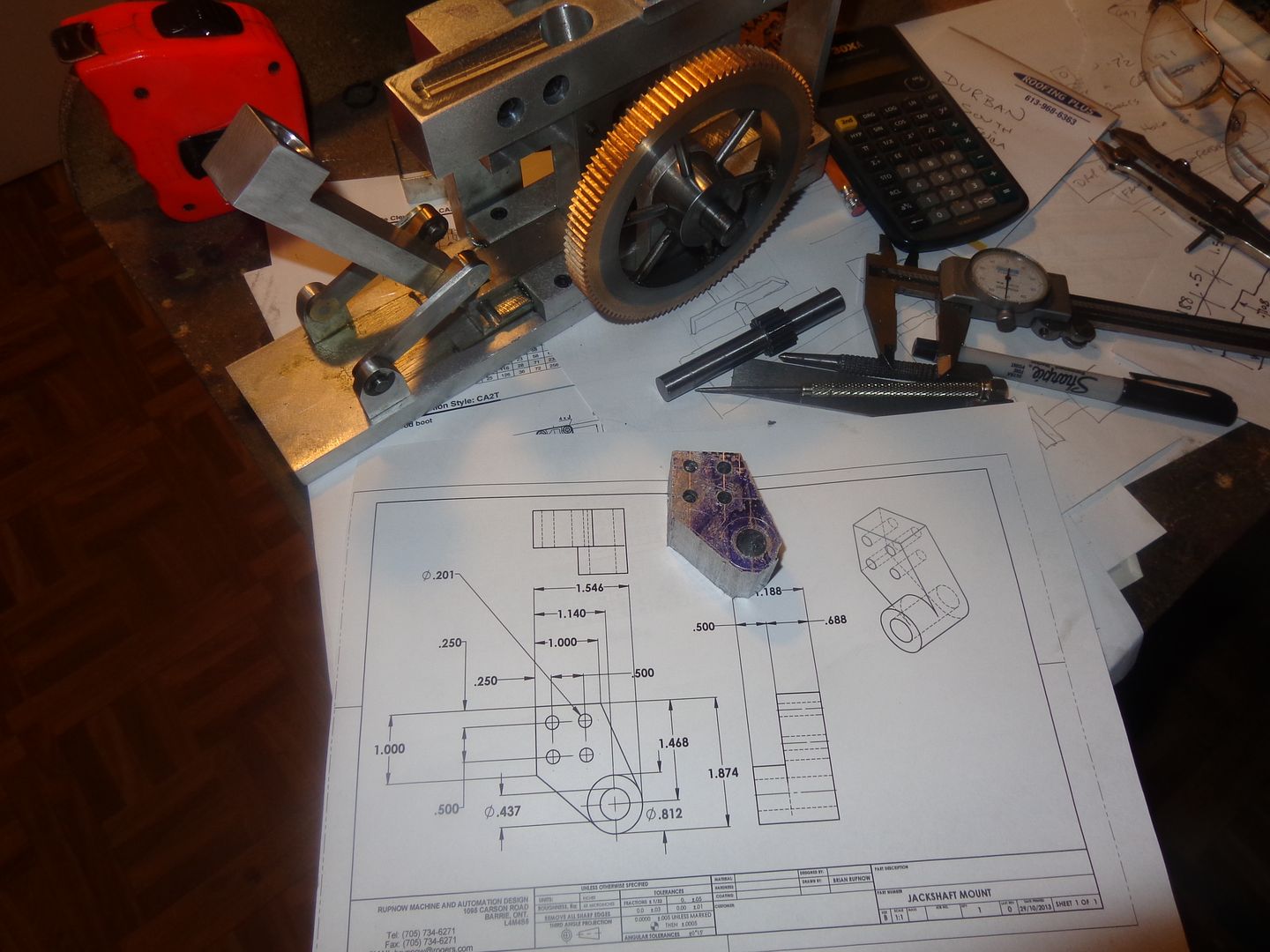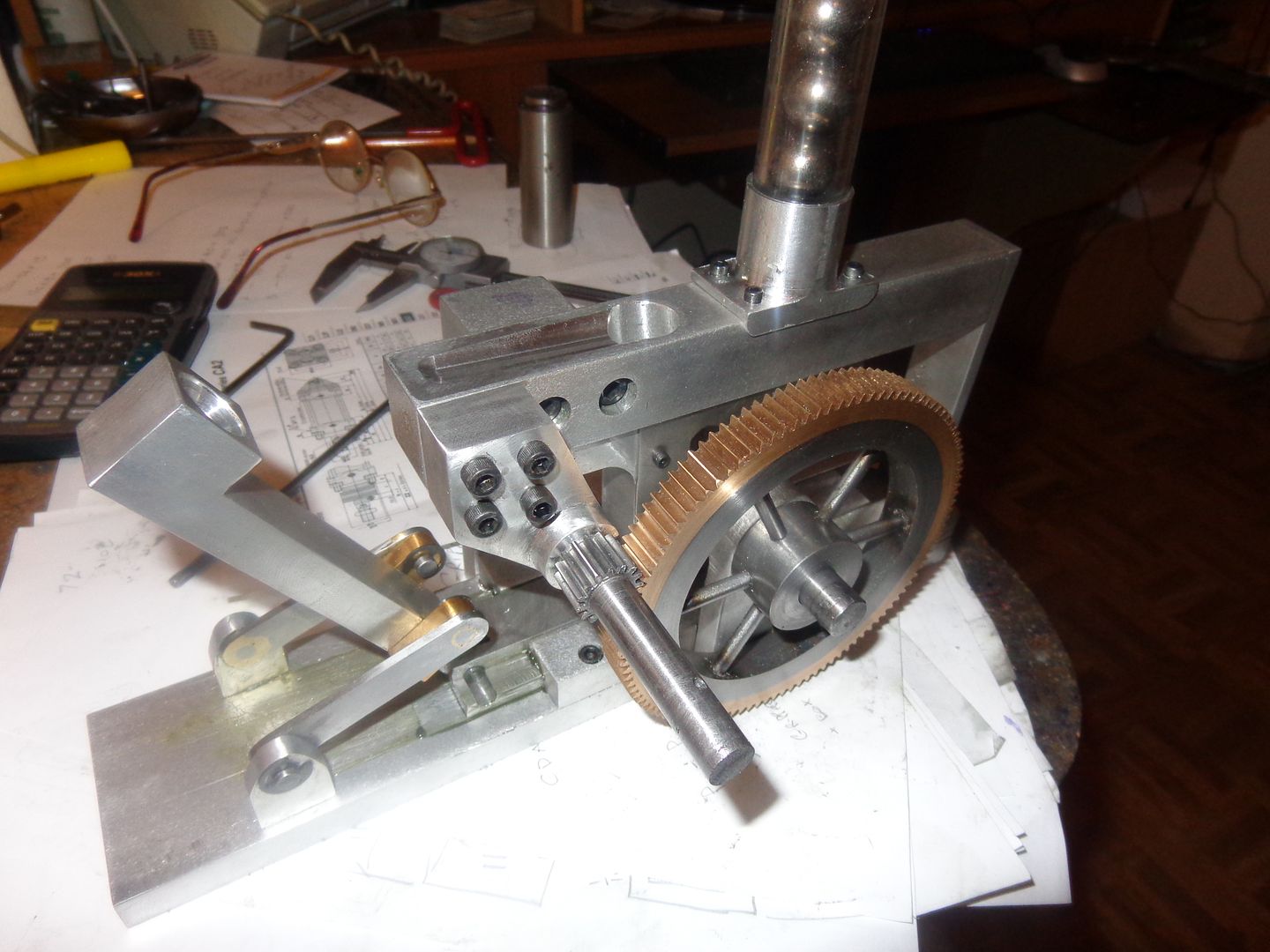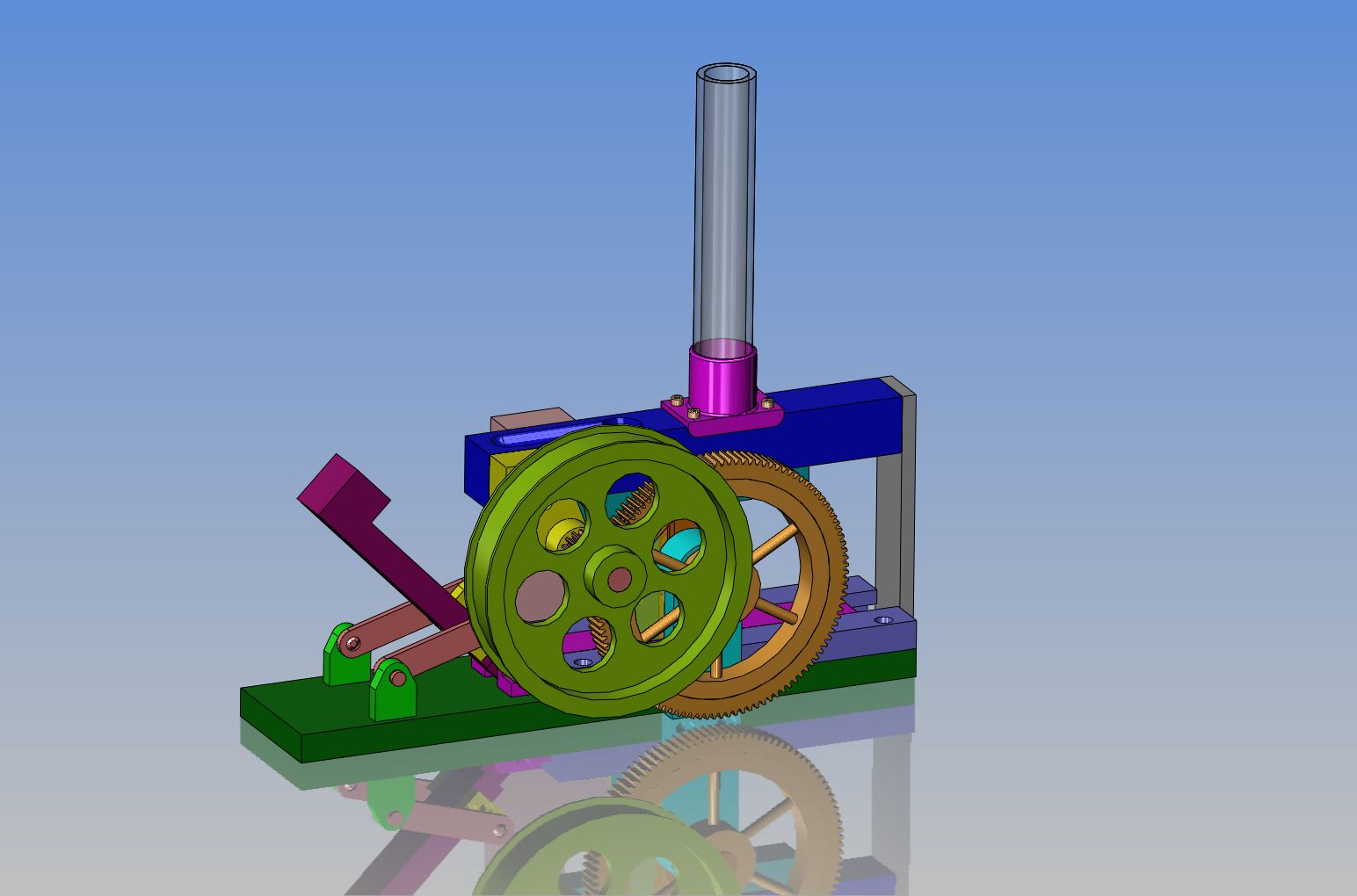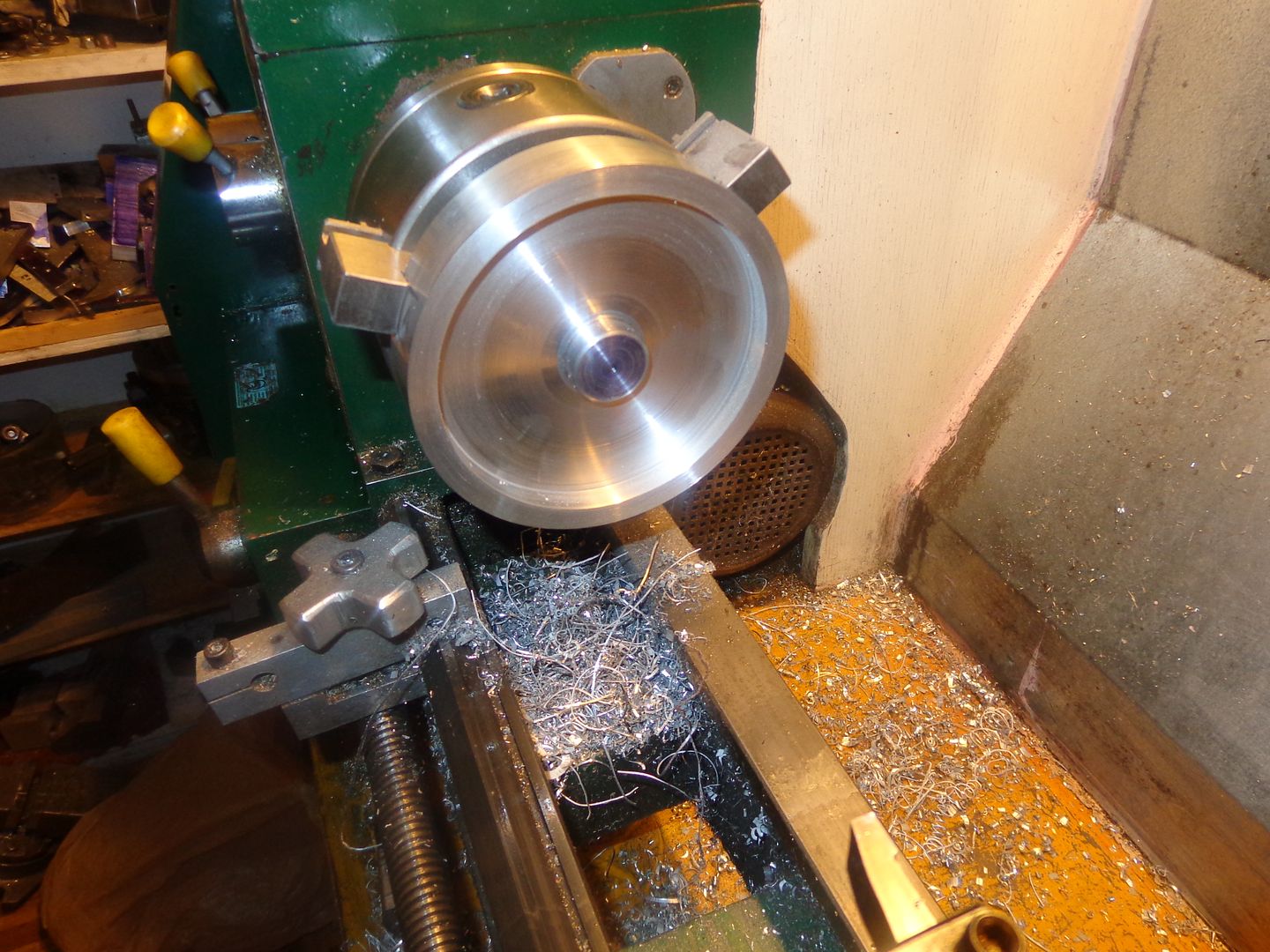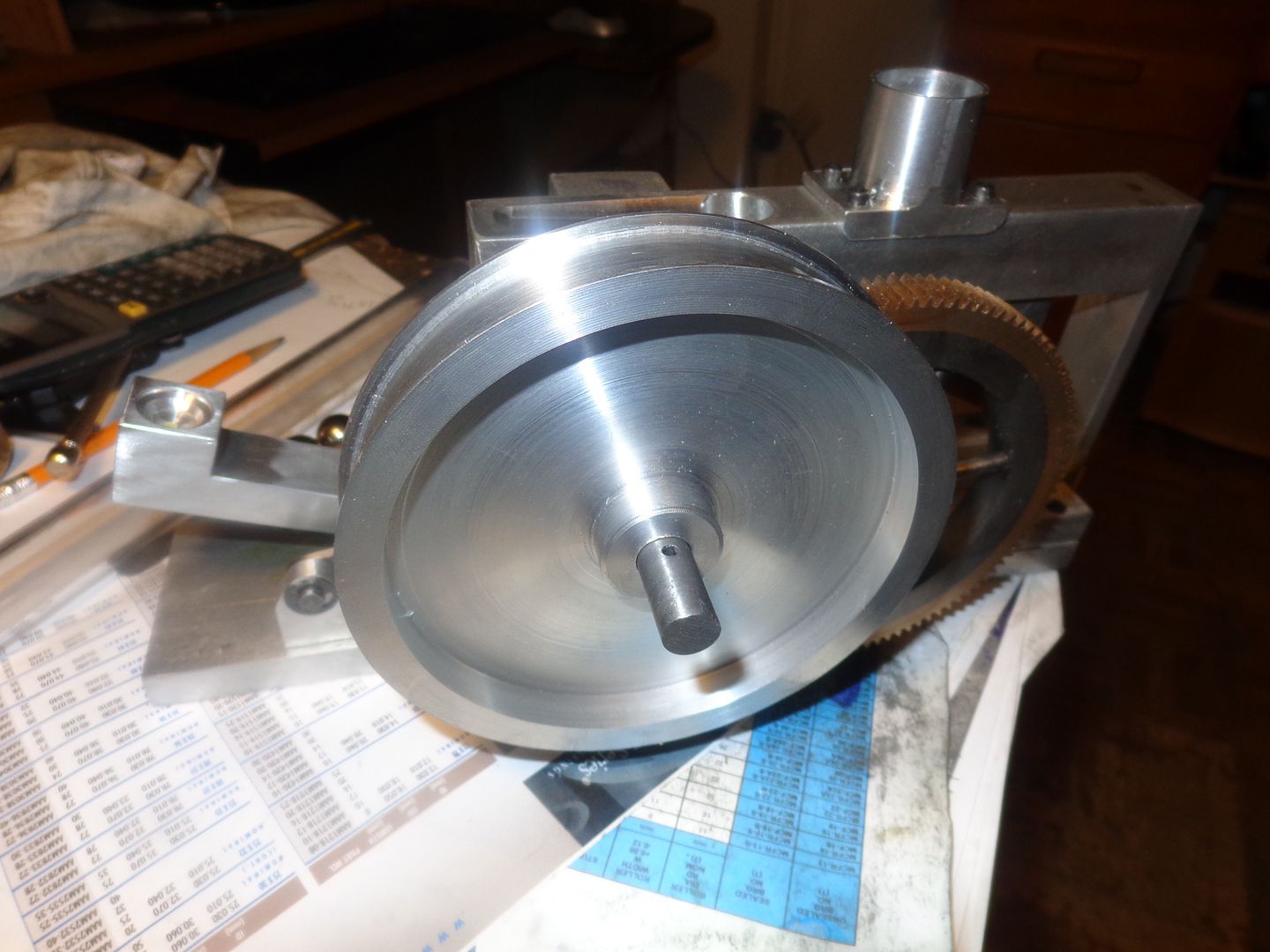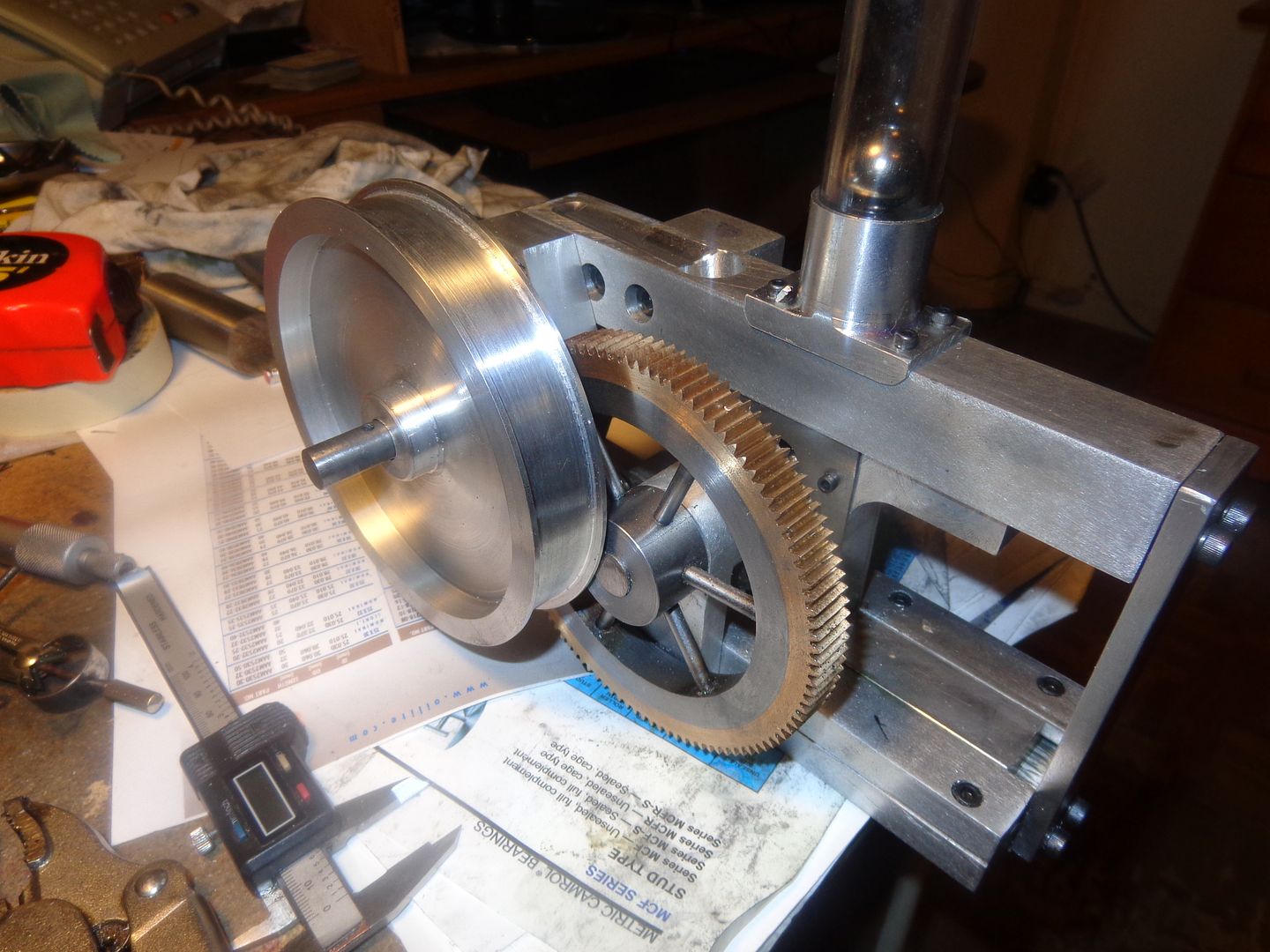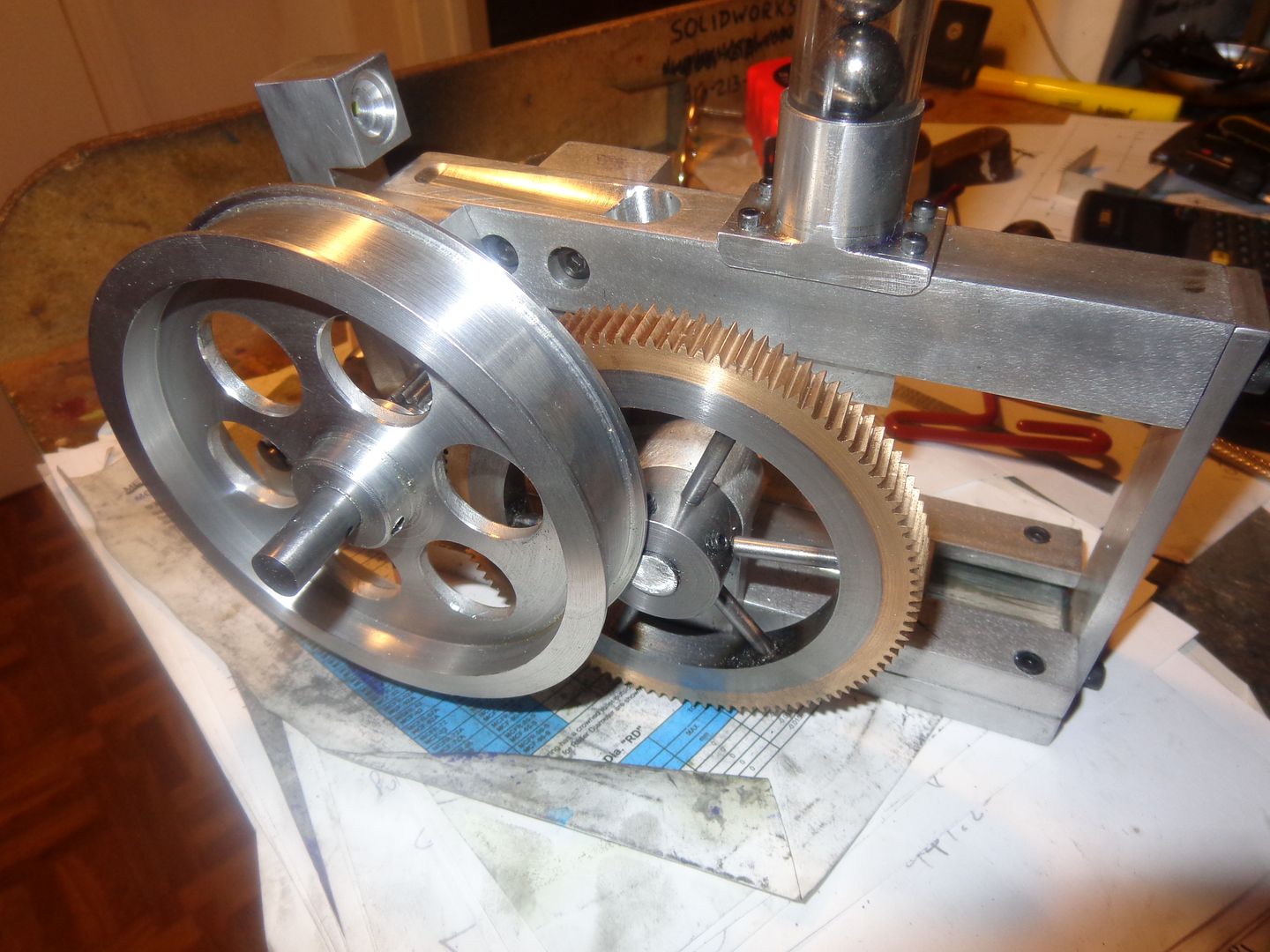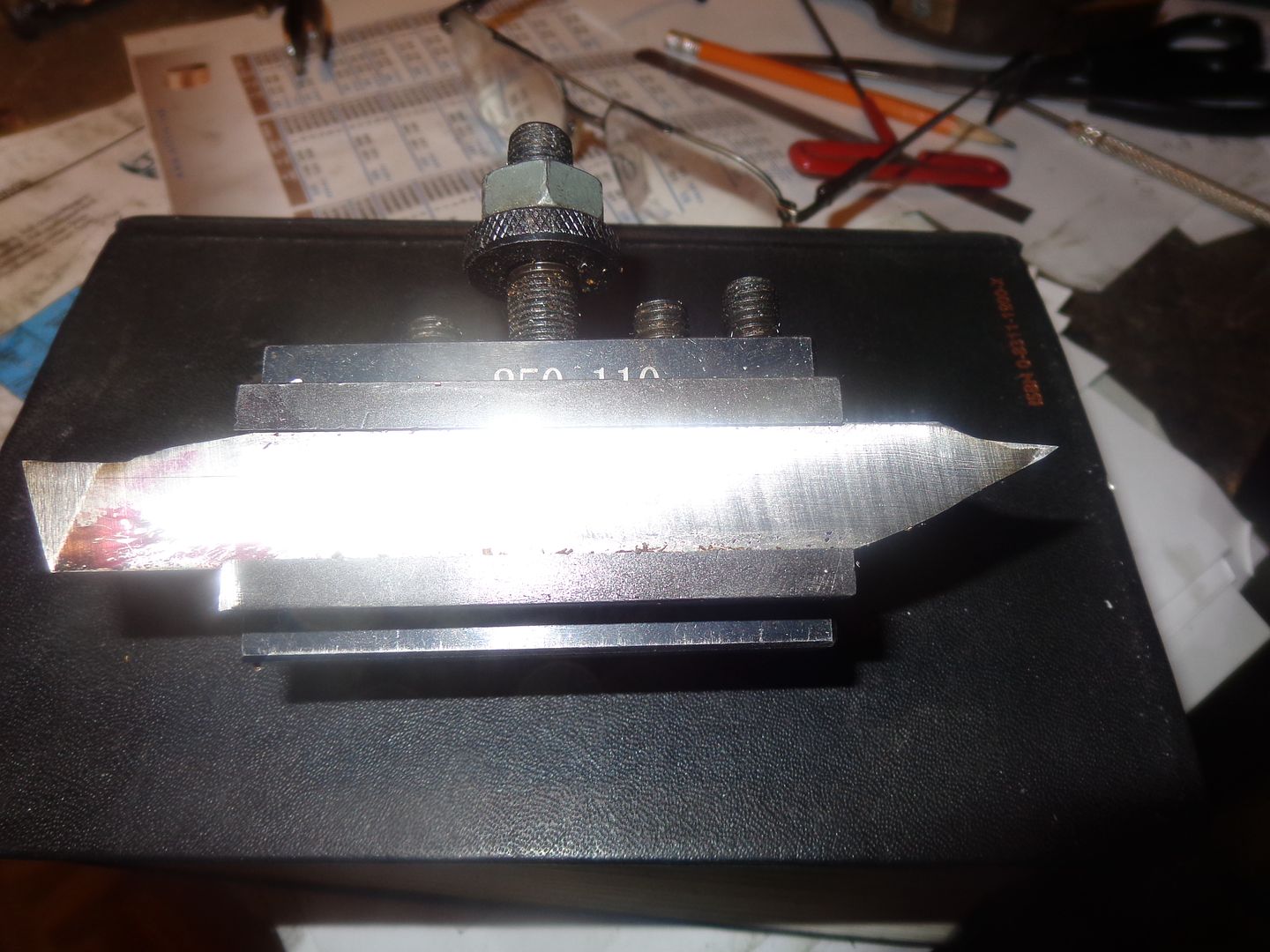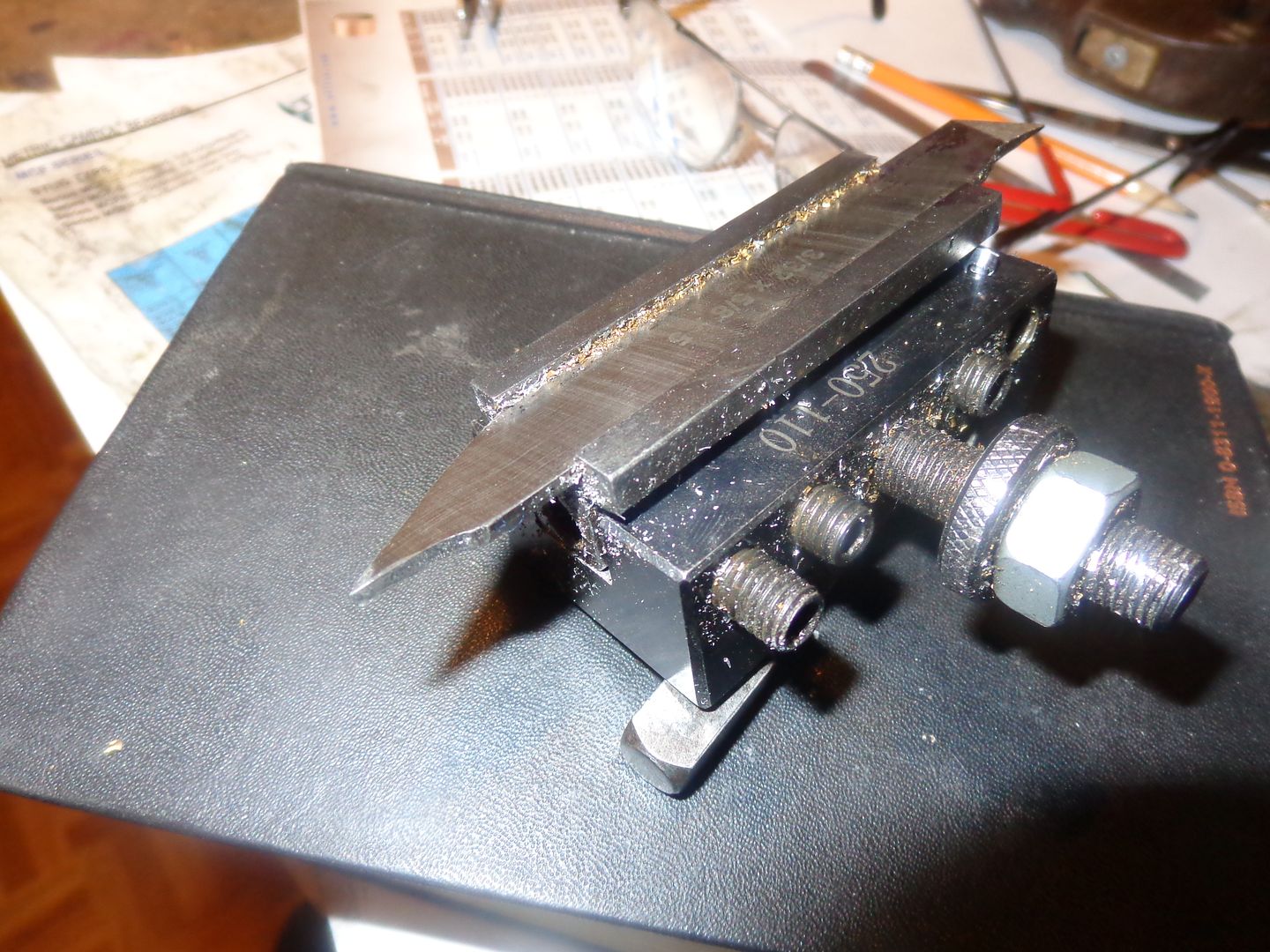Now that, my friends, is one HUGE gear. Huge by model makers standards at any rate. The outer diameter is 4.583", and its the biggest blank that will fit into my milling machine. 108 teeth, 4.5" pitch diameter. It didn't really take as long to cut as I thought it would---maybe about 1 hour total. When I got to the point where I fed it through the cutter and didn't hear anything actually cutting, I breathed a huge sigh of relief. I have this deep seated horror of getting all the way around on a gear and then starting to cut away the teeth that are already cut.--It happens!!!
